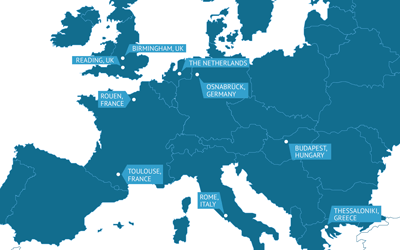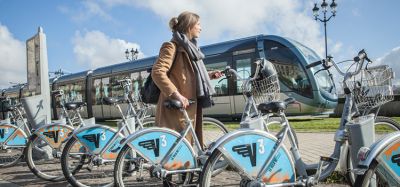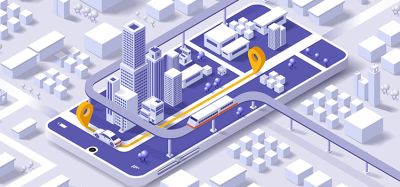NODES: A toolbox to support transport interchange performance
- Like
- Digg
- Del
- Tumblr
- VKontakte
- Buffer
- Love This
- Odnoklassniki
- Meneame
- Blogger
- Amazon
- Yahoo Mail
- Gmail
- AOL
- Newsvine
- HackerNews
- Evernote
- MySpace
- Mail.ru
- Viadeo
- Line
- Comments
- Yummly
- SMS
- Viber
- Telegram
- Subscribe
- Skype
- Facebook Messenger
- Kakao
- LiveJournal
- Yammer
- Edgar
- Fintel
- Mix
- Instapaper
- Copy Link
Posted: 2 September 2015 | Caroline Hoogendoorn, NODES Project Coordinator
Interchanges play a key role in the integration of urban mobility systems and in enabling good intermodal solutions. Their efficiency is therefore essential to achieve sustainable transport objectives in Europe. The European co-funded project NODES (New Tools for Design and Operation of Urban Transport Interchanges) has developed a Toolbox to allow practitioners to assess and benchmark their new or upgraded interchange and to improve its performance. On the verge of the project’s close – the Final Conference of the project will be held in Brussels on 22 September 2015 – what are the main outcomes that can be expected? NODES Project Coordinator Caroline Hoogendoorn takes a look…


NODES is a three-year collaborative research project co-funded by the Seventh Framework Programme. Coordinated by the International Association of Public Transport (UITP), it brings together 17 partners representing local government administrations, public transport operators, as well as research centres and European associations.
Measuring the performance of a transport interchange
How would passenger intermodality ideally look like in 2020? And what will be the role of intermodal interchanges then? These are some of the questions that have been discussed during the first year of the NODES project so that future user needs and system requirements could be defined. In addition, 18 EU co-financed research projects, 10 policy frameworks and design guidelines and over 30 best-practices have been analysed within the NODES ‘State-of-the-Art’. The aim was to identify possible interchange typologies, criteria and performance indicators.
These indicators – which were clustered into key performance indicators – enable practitioners to better understand the performance of their transport interchange. First in the format of an Excel table, these indicators were further worked on in order to develop the online so-called ‘NODES Benchmark tool’. In order for a practitioner to use this, they first need to give a number of main figures related to their interchange. They are then directed to a list of questions which will allow the performance evaluation. This tool will be online at the end of the project. The partners who were at the forefront of this tool’s development were in particular The West Midlands Integrated Transport Executive and DTV consultants.
Improving performance thanks to the NODES Toolbox
Once a practitioner obtains the strong and weak points of their interchange, they are pointed towards a list of tools which will allow them to improve its performance. These tools are based on the most advanced practices in urban transport and are of various natures (software, methods, techniques, models, regulations, materials, etc.). All tools have been grouped together in a so-called ‘NODES Toolbox’ which will be accessible online at the end of the project. Each tool is described in a standard way and was classified following, in particular, the type of interchange it applies to, the type of practitioner which uses it and the objective it aims for.
The indicators as well as the tools cover the following five key areas related to transport interchanges:
- Strategies for integrated land use planning with urban passenger infrastructure planning (land use and infrastructure)
- Innovative approaches relating to the design of new or upgraded efficient transport interchanges (design)
- Intermodal operations and information provision (intermodality and ICT)
- Management and business models: the interchange as a business case for the local economy and itself (management and business models)
- Energy efficient and environmentally-friendly interchanges (energy and environment).
In order to validate the efficiency of the tools that were identified, they were tested in nine reference sites distributed around Europe, all engaged in substantial development and upgrading activities: Reading (UK); Birmingham (UK); Rouen (FR); Toulouse (FR); Osnabrück (DE); Budapest (HU); Rome (IT); Thessaloniki (EL); and the stations of Rotterdam, Utrecht and ‘s-Hertogenbosch, all considered as one NODES site in The Netherlands (see Figure 1 on page 00). The tools and the results of their testing phase were then evaluated following a strict evaluation framework.
Examples of NODES tools
The Madrid NODES partner Consorcio Regional de Transportes de Madrid (CRTM) developed a tool which aims at identifying the design stakes and facility requirements in an interchange. Called ‘Interchange Typology Diagrammatic Representation’, this tool consists of a simple diagram which displays each transport mode’s importance (demand level) and accessibility at an interchange. It thereby becomes easy to compare interchanges, but also simply to better understand an interchange thanks to a visual representation.
Another example of a NODES tool is the ‘Station Experience Monitor’ which was developed by the Dutch partner Nederlandse Spoorwegen (NS). Initially used in the Netherlands by NS, it was turned into a European tool thanks to the involvement of the NODES partners. This instrument supports station designers in helping them not to stop at functionality and to look into passenger stations experience. It was found that often very simple low-cost interventions can already have a large impact on the waiting and travel experiences of the interchange users.
References
- nodes-interchanges.eu
- Twitter: @transportnodes
- Facebook: facebook.com/Nodestransport
- The NODES Final Conference will take place in Brussels on 22 September 2015. Participation is free-of-charge but registration is compulsory. For more information contact Caroline Hoogendoorn via email at [email protected]
Biography
Caroline Hoogendoorn in charge of several urban mobility related projects at the International Association of Public Transport (UITP). Since 2012, she has been coordinating the European project, NODES.
Related topics
Multimodality
Issue
Issue 4 2015
Related organisations
International Association for Public Transport (UITP)








